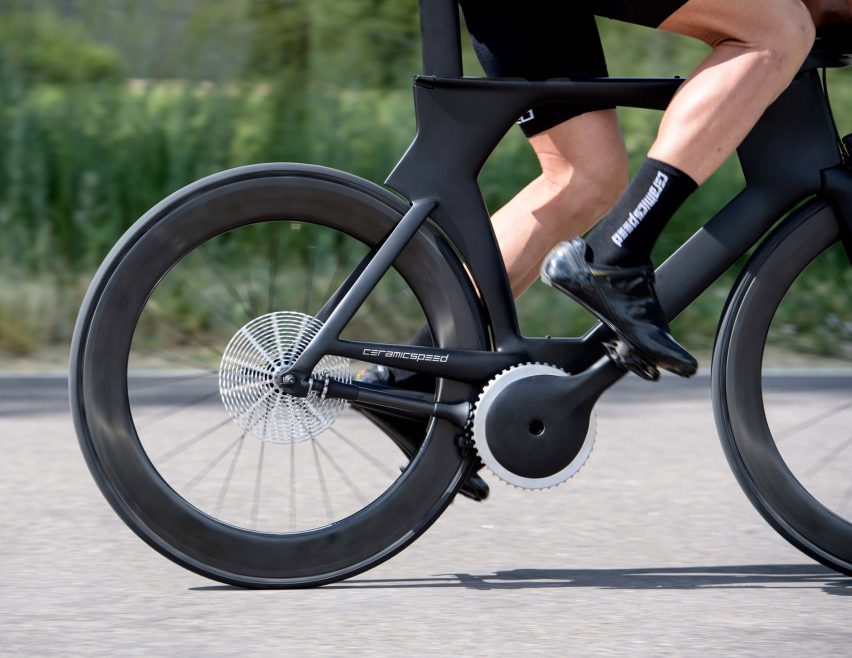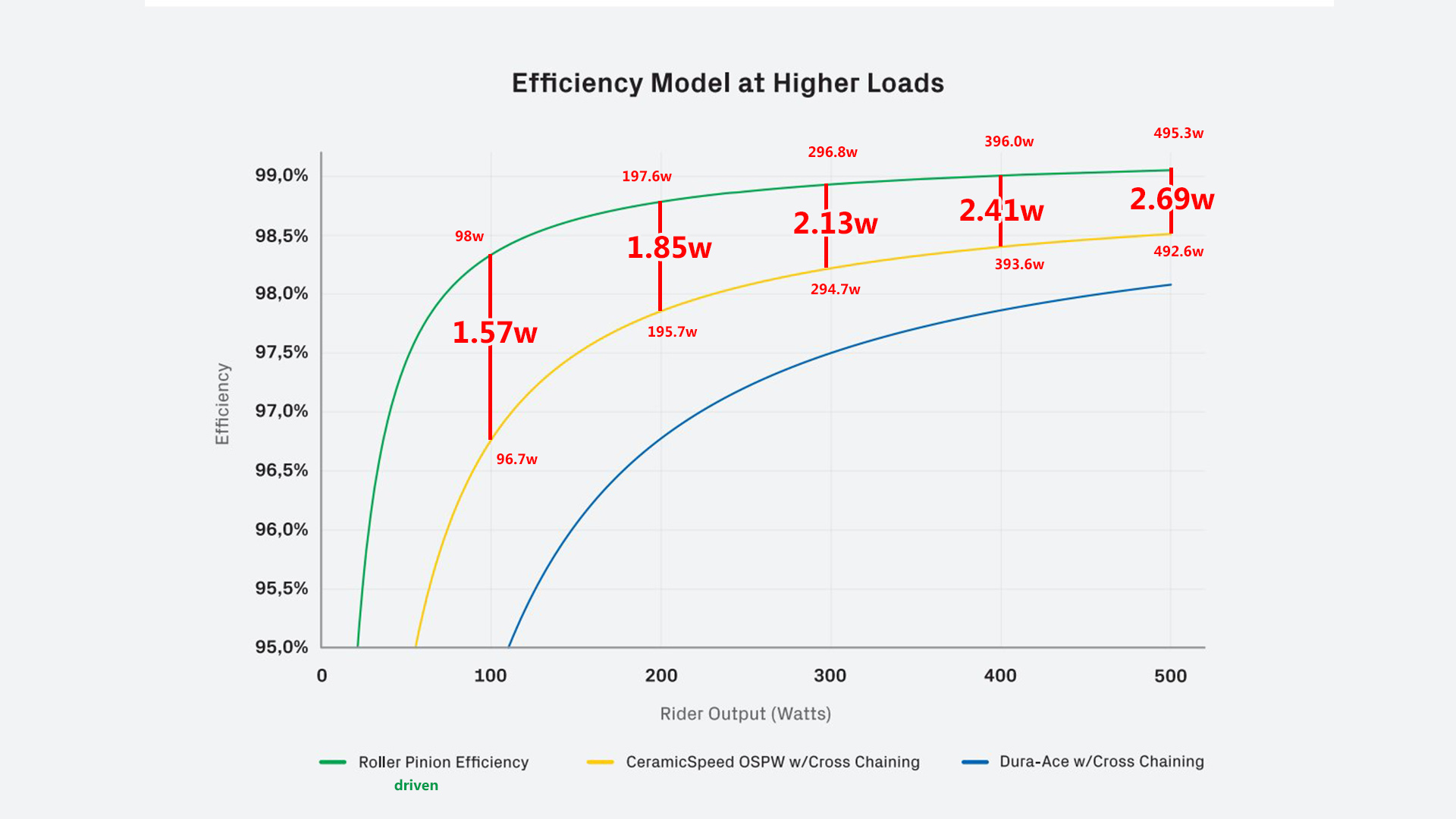Hello 7401southwick and All,
Actual efficiency varies inversely with chain tension … In this study …
I think I saw a study by another group that found somewhat different results … YMMV
http://www.ihpva.org/...ve/PDF/hp50-2000.pdf
DISCUSSION AND CONCLUSIONS Tests of efficiency for the derailleurtype chain drive indicate that the overall efficiencies for the transfer of power from the front drive sprocket to the rear sprocket range from 80.9% to 98.6% depending on the conditions of drive operation.
Primary factors affecting the efficiency include the sizes of the sprockets in the drive and the tension in the chain. It was found that larger sprockets provide more efficient transfer of power while smaller sprockets proved to be less efficient. Simple, frictional loss models were developed that gave sprocket-size loss variations that agreed with those variations measured experimentally. Typically, a 2–5% loss difference was measured between the 52–11 and the 52–21 sprocket combinations depending on the drive operating conditions.
Experimental results indicated that the efficiency of the chain drive varied as a function of chain tension. It was found that the efficiency varied linearly with the reciprocal of the average chain tension with the highest efficiencies occurring at high chain tensions and lowest at low chain tensions. For example, the highest efficiency measured in the study, 98.6%, was measured at a chain tension of 305 N and the lowest, 80.9%, at 76.2 N.
It was found that chain-line offset and chain lubrication have a negligible effect on efficiency under laboratory conditions. Calculations of frictional loss resulting from offset indicate that this loss should be small compared to those produced by other mechanisms. This was verified experimentally. Lubrication effects on chain efficiency were tested using three different chain lubricants under a variety of test configurations. No significant quantifiable effect of lubrication could be inferred from these tests.
Infrared measurements of drive components indicate that frictional losses in the chain cause the chain temperature to rise during operation. This increase in temperature did not correlate with measured efficiencies under various conditions of operation. Infrared measurements on lubricated and delubricated chain links showed that the frictional heating did not depend on lubrication.
From the results of this study, it appears that the efficiency of the bicycle chain drive depends intimately on the chain operation as it engages and departs from the sprockets on the hightension part of the drive. Owing to the high efficiencies measured under high chain tensions, friction can account for only a few percent of the overall losses. Most probably, mechanical losses that are not converted to thermal energy in the drive account for the remainder of the measured loss.

